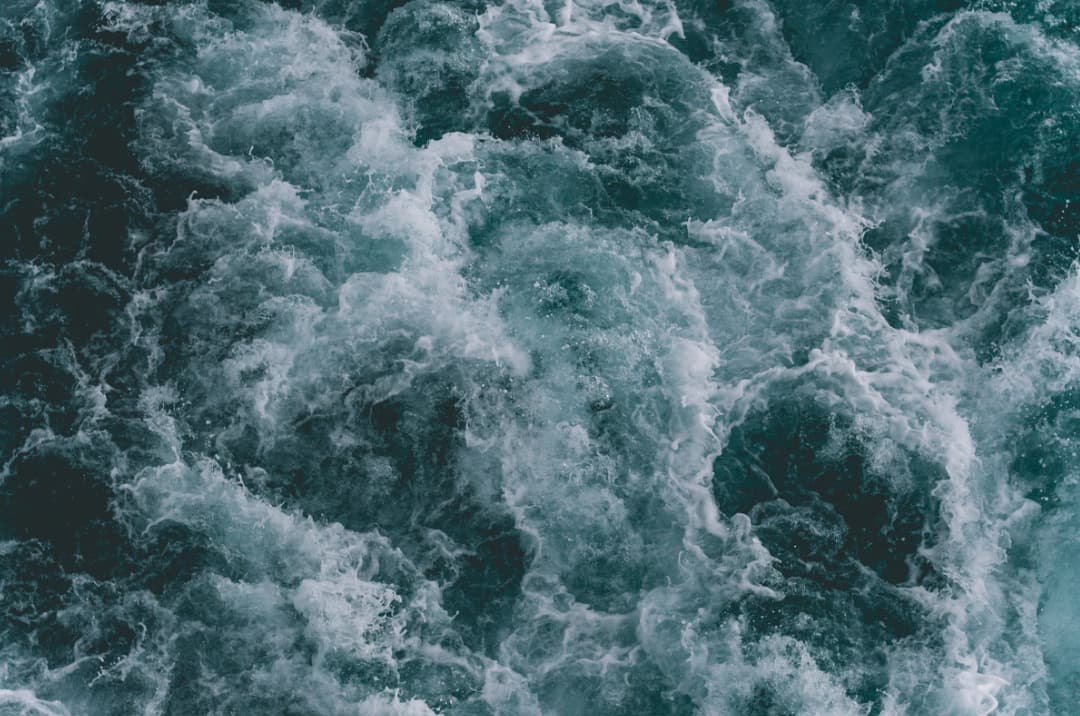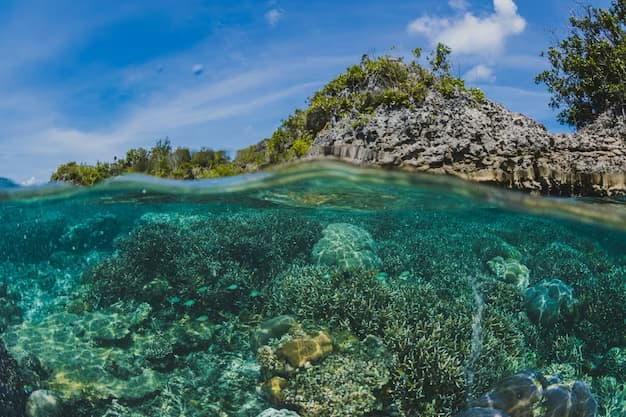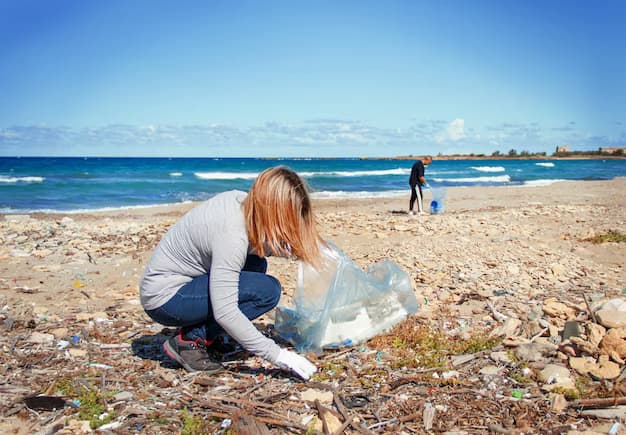Throughout history, the vast expanse of the Earth’s oceans has captivated humanity’s imagination—alternately held in awe, feared, or viewed as a formidable barrier to be crossed. These waters, which play a pivotal role in shaping global weather patterns, are believed to be the cradle of all terrestrial life.
In pursuit of understanding these mysterious bodies of water, humans have studied and categorized them into various numbers, leading to a complex debate over how many oceans there actually are. This dispute has seen the count fluctuate over the ages, with current opinions divided among those who argue for one, four, five, or more oceans, reflecting the multifaceted nature of this question.
What is an Ocean, Anyway?
An ocean’s essence is encapsulated not just in its vast expanse of salt water, whether resting on the planet’s surface or nestled deep beneath it, but also in its distinct geological identity. The contrast between Earth’s predominantly granite crust and the basaltic composition of the ocean floor is stark, highlighting the unique origin and structure of these underwater landscapes that began forming around 200 million years ago. The ocean floor is not only remarkable for its geological diversity but also for its magnetic anomalies, which offer clues to the planet’s magnetic field reversals over millennia. Enveloping this rugged terrain is water that plunges to average depths exceeding 12,000 feet, with salinity levels around 3.5 percent. This saline environment is a repository for the full spectrum of chemical elements found on Earth, making the ocean a complex chemical soup with profound implications for life and climate.
The Pacific Ocean’s Mariana Trench, the deepest known point in the ocean, exemplifies the profound depths that these waters can reach, extending more than 36,000 feet below the surface. The delineation of ocean boundaries is a complex affair, influenced by an array of natural and human factors. Tectonic plate movements can reshape the ocean floor, creating new basins or altering existing ones, while changes in sea level can expand or contract oceanic boundaries. Geopolitical considerations also play a role, as nations delineate maritime borders based on economic, strategic, or environmental priorities. This intricate interplay of geological, hydrological, and human factors makes the understanding of oceanic boundaries a dynamic and evolving field, reflecting the multifaceted relationship humanity has with these vast bodies of water.
How Many Oceans Are There? 1 For a Few
World Oceans Day, celebrated on June 8th and officially recognized by the United Nations in 2008, originated from The Ocean Project’s initiative to promote the awareness of a singular, interconnected global ocean that is divided into various distinct regions. This concept is not new; it traces its roots back to Ancient Greece, where the ocean was personified by the deity Oceanus, symbolizing the vast, unifying body of water that encircles the Earth’s continents. This ancient perspective viewed the ocean as a singular entity that covered more than 71 percent of the Earth’s surface, totaling approximately 320 million cubic miles of water. Over time, as exploration expanded and scientific understanding deepened, the initial concept of a World Ocean evolved, leading to the identification and categorization of different oceanic regions based on various criteria such as geographical location, water temperature, and current patterns. This evolution reflects humanity’s growing comprehension of the ocean’s complexity and its critical role in the global ecosystem.
The significance of World Oceans Day lies in several key objectives:
- Raising Awareness: Highlighting the importance of the oceans in our daily lives and the impact of human actions on the ocean;
- Encouraging Conservation: Promoting efforts to protect the ocean and its inhabitants from pollution, overfishing, and other threats;
- Fostering Research: Encouraging scientific exploration and research to better understand the oceans and address the challenges they face;
- Promoting Sustainable Practices: Advocating for sustainable management of ocean resources to ensure they continue to provide for future generations;
- Uniting the Global Community: Bringing together people from around the world to celebrate our oceans and work towards their preservation.
World Oceans Day serves as a reminder of the ocean’s significance to life on Earth and the responsibility we share in safeguarding this vital resource. It underscores the interconnectedness of humanity and the ocean, emphasizing that collective action is essential for maintaining the health and sustainability of this immense body of water that sustains us all.
How Many Oceans Are There? 4 For Others.
For much of the 20th century, students were taught that Earth has four oceans: the Atlantic, Pacific, Indian, and Arctic. This traditional view is now considered outdated, though the National Ocean Service (NOAA) recognizes these four basins within the overarching Global Ocean.
How Many Oceans Are on Earth? 5 For Some.
In 2000, the International Hydrographic Organization endorsed the concept of a fifth ocean, the Southern Ocean, with its boundaries still under debate. Most countries acknowledge its extent from 60 degrees South to Antarctica’s edge.
List of Oceans
The Global Development Research Center, among others, acknowledges five distinct oceans—Atlantic, Pacific, Indian, Arctic, and Southern—each unique in size, depth, and current patterns. These oceans, from the Atlantic with its significant depth and broad expanse bordering multiple continents to the Pacific with its vast array of islands and the deepest point on Earth, and from the strategically located Indian Ocean to the icy realms of the Arctic and the newly recognized Southern Ocean encircling Antarctica, form a complex web of waterways that are crucial to life on our planet.
| Ocean | Area (sq miles) | Deepest Point | Notable Features |
|---|---|---|---|
| Atlantic | 32 million | Puerto Rico Trench (28,000 feet) | Borders Americas, Africa, Europe; includes Caribbean Sea |
| Pacific | 64 million | Mariana Trench (36,000 feet) | World’s largest; Ring of Fire; numerous islands |
| Indian | 28 million | Java Trench | Borders Australia, Africa, South Asia; strategic maritime routes |
| Arctic | 5 million | Eurasia Basin | Smallest; ice-covered; borders northernmost countries |
| Southern | Varies | South Sandwich Trench | Encircles Antarctica; significant sea ice coverage |
This table underscores the unique aspects of each ocean, emphasizing their collective importance to the Earth’s geophysical and ecological balance.
To Wrap Up
In conclusion, the Earth’s oceans, with their vastness and depth, remain a source of wonder and intrigue. They are the lifeblood of our planet, regulating climate, supporting a diverse array of marine life, and serving as key conduits for global commerce. The debate over the number of oceans highlights the complexity of our planet’s geography and the evolving nature of scientific understanding. Whether one views the world’s oceans as a single interconnected body of water or distinct entities, it is clear that these aquatic realms are integral to Earth’s environmental health and humanity’s survival. As we continue to explore and understand the depths of these oceans, it is crucial to recognize their importance in global ecosystems and the need for their preservation. The future of our planet depends on our ability to protect and sustainably manage these vital resources, ensuring they remain vibrant and life-supporting for generations to come. The table below summarizes the recognized oceans, their key characteristics, and their global significance, providing a snapshot of their diversity and the role they play in our world.



